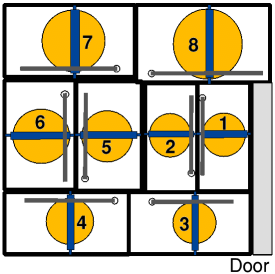 The bellframe fills the whole of the bell chamber, with a pit for each bell to hang in. In order to distribute the forces on the tower, half of the bells swing east-west and half swing north-south. The picture is looking down on the frame.
The bellframe fills the whole of the bell chamber, with a pit for each bell to hang in. In order to distribute the forces on the tower, half of the bells swing east-west and half swing north-south. The picture is looking down on the frame. Did you know? :
 The bellframe fills the whole of the bell chamber, with a pit for each bell to hang in. In order to distribute the forces on the tower, half of the bells swing east-west and half swing north-south. The picture is looking down on the frame.
The bellframe fills the whole of the bell chamber, with a pit for each bell to hang in. In order to distribute the forces on the tower, half of the bells swing east-west and half swing north-south. The picture is looking down on the frame.
In each pit, a bell (orange) hangs from a headstock (blue) with a wheel (grey) attached. The ropes wind opposite ways round the wheels of adjacent pairs of bells, so they swing in opposing directions, which further reduces the lateral force on the tower. See explanation of how a bell works .
The frame is made of pairs of 4"x1" wrought iron bars, a bit like giant Meccano, and is characteristic of those made by Webb & Bennett, who hung the bells in 1903. The bells are normally left mouth down for safety, but for ringing they are swung full circle - mouth up to mouth up. The 'stays' seen sticking up when the bells are down, engage with a slider to enable them to be 'set' in the up position between periods of ringing. See a more detailed description of how a bell works.
There is an additional small bell, hung above the others. This does not have ringing fittings, and can only be chimed by being swung through a small arc. It is used for services when there are no ringers present.
The roof is supported on massive, but rather decayed, and much repaired timbers. The two main beams are carved 1615 and 1702.
The tower openings are fitted with sound control shutters that are open for public ringing and closed for practices, etc. Prior to 1982 when the shutters were installed , the openings had been almost bricked up to reduce the intensity of the sound close to the church.
Butterflies hibernate in the tower during winter, and often flutter down rather dazed, during ringing. They are reputed to hibernate inside the bells, but we have never seen this, but they can sometimes be seen on the roof beams, as shown below.
The bell chamber door is at frame-top height, with a walkway along the East wall that gives visitors a good view of the whole installation (better than coming in at floor level alongside the frame, for which there isn't space anyway!). Each wheel is fitted with a reflector and sensor that work in conjuntion with the simulators in the ringing room used for training.
When the local Fire Brigade visited the tower in 2024 they realised that the bell chamber would be a difficult place from which to extract anyone with serious injuries, so in 2025 they ran a training exercise to do just that.
Click each to enlarge and move between pictures using the arrows.
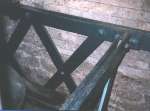 Webb & Bennett frame |
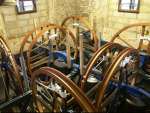 Bells down |
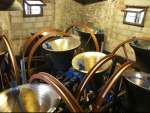 Bells up |
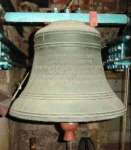 Service bell |
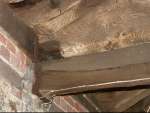 Beam repair |
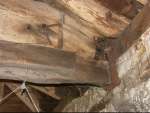 Beam repair |
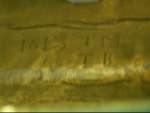 Beam with '1613' |
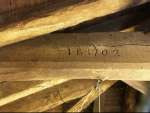 Beam with '1702 |
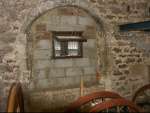 Shutter open |
 Shutter closed |
 Butterfly on roof beam |
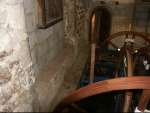 Access walkway |
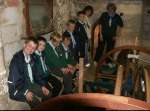 Visitors |
| Back to top | Return to Tower | Up to Roof | Down to Clock room | Return to Home page | Feedback |